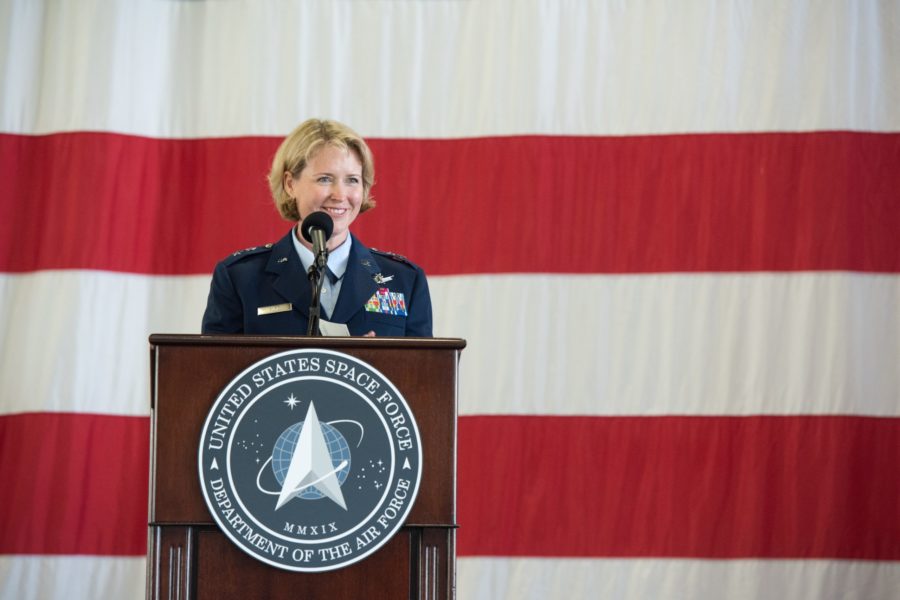U.S. Space Command and the Space Force are working on new ways to openly discuss capabilities in orbit while ensuring the military can still deter adversaries who are improving their own capabilities there.
Top leaders of the Space Force, SPACECOM, and elsewhere in the Pentagon have repeatedly said the overclassification of space systems is problematic, especially in the area of deterrence. Maj. Gen. DeAnna M. Burt, the commander of SPACECOM’s Combined Force Space Component Command and deputy commander of Space Operations Command in the U.S. Space Force, said May 3 that the organizations are determining a new strategy for what can be announced publicly.
“If I can’t talk about what I have to hold your capabilities at risk, then I really can’t deter,” Burt said during an AFA Mitchell Institute for Aerospace Studies Space Power Forum. “So, we’ve been working really hard on a conceal, reveal, obfuscate strategy. How are we going to talk about our capabilities? What are the things we’re willing to talk about? What are we not willing to talk about? And how will that then translate into our deterrence strategies and how we operate.”
Historically, the way space systems are built has fed into this culture of overclassification, Burt said. For example, when a new aircraft comes online, the service buys a small number and takes them out to its test sites, “and we really wring them out. … [Then] we go back to the vendor and say, ‘Hey, this, this, and this doesn’t meet specs, and we need you to update them.’” The process will go through iterations until mass production starts. For space, however, that process is very different. A new constellation could include six aircraft. The first launches, enters orbit, and then gets tested, but it is still the first operational satellite for that constellation—it doesn’t return to the vendor to be updated, Burt said.
“Once you launch it, you own it. And you’re now working with those capabilities,” she said. “So sometimes I think we’ve overclassified because we believe that if I tell you about it, or you know too much about it, then you can defeat it quickly or you have a way to counter it.”
But with new space acquisition strategies and capabilities, such as common buses, digital payloads, and other ways to modernize both the satellite and the receiver, “we can actively respond as the enemy changes, to change the software on board to include crypto,” she said.
This means U.S. space-based capabilities will be more resilient and responsive, freeing up leaders to talk about it more “because … we have the ability to quickly upgrade the capabilities as the enemy gets a vote,” she said.
